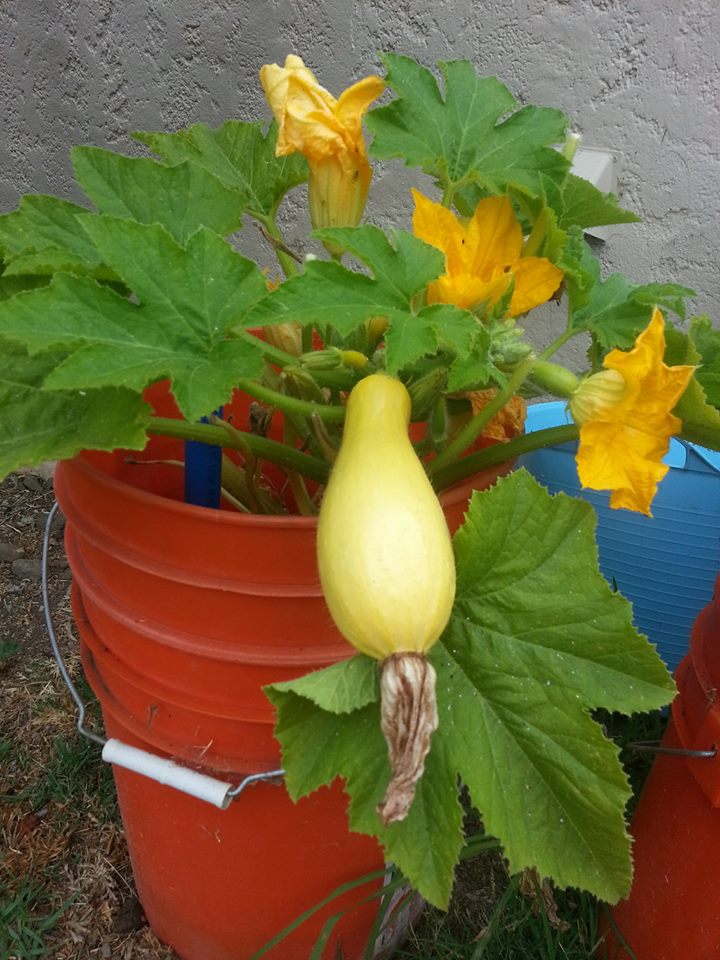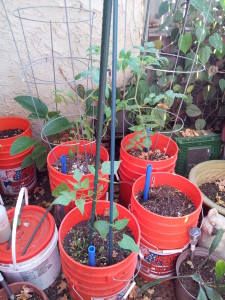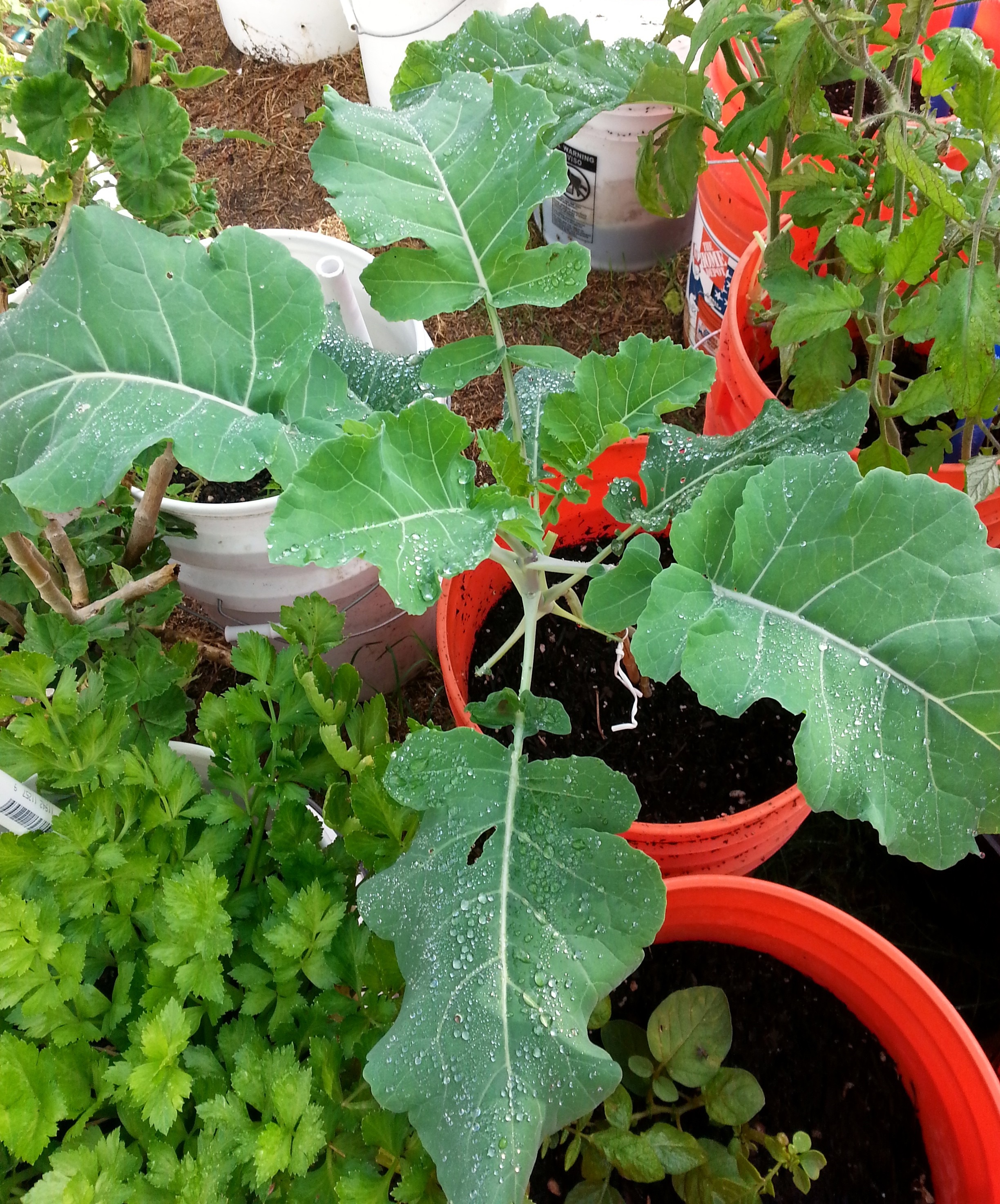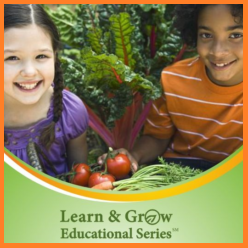
Click on the links below to find lesson plans tied to the Common Core and STEM, all centered around classroom self-watering bucket container gardens. Each lesson plan is organized by grade level, but is also geared towards learners of specific developmental levels according to Piagetian scales to aid in adapting the curriculum to learners with developmental delays.
Self-Watering Container Garden Project Lesson Plans:
- Kindergarten: Pre-Operational/Concrete – Learners at the pre-operational stage of development with emerging concrete operations are suited for this activity.
- First Grade: Early Concrete – Learners with emerged and developing concrete operations are suited for this activity.
- Second Grade: Concrete – This activity is suitable for learners with established and developing concrete operations.
- Third Grade: Concrete – This activity is suitable for learners with established and developing concrete operations.
- Fourth Grade: Concrete – This activity is suitable for learners with established concrete operations.
- Fifth Grade – coming soon!
- Sixth Grade: Concrete/Formal – Learners with concrete operations and emerging formal operations are suited for this activity.
- Seventh Grade: Concrete/Formal – Learners with concrete operations and emerging formal operations are suited for this activity.
- Eighth Grade: Early Formal – Learners with the earliest aspects of formal operations intact and more sophisticated formal operations emerging are suited for this activity.
- Ninth through Twelfth Grade: Formal Operations – Learners who have achieved formal operations are suited for this activity.

Almost all of our PBL activities are centered around the construction and use of self-watering bucket containers using 5-gallon buckets. For a list of materials, step-by-step instructions, and a video demonstration on how to build a self-watering bucket container, click here.
Our PBL activities are currently designed around classroom container gardens, though we have plans to expand to include school-wide container gardens. Some of our PBL activities focus on the planning stages of creating a container garden while others focus on the initial building and planting activities and yet others allow your gardens to become learning labs for science experiments. Others focus on what becomes of the produce that your garden yields.
If you are interested in starting a Learn & Grow garden at your school and would like technical assistance, please contact us and we will work with you to provide phone, email, and (where possible) in-person support. However, it’s our intent that our content on this site will provide you with the necessary information so you aren’t having to track someone down. If you find content on our site that requires clarification or additional information, please do not hesitate to contact us and let us know.
For Students with Special Needs:
Above we have listed our PBL activities according to grade for the purpose of tying our content to the Common Core. However, we also are acutely aware that some students with special needs will not be able to perform at grade level. Therefore, each grade-level PBL activity also includes reference to Piagetian stages of development in order to match curriculum to each individual student’s learning abilities. If you need to scaffold instruction for a student with special needs that targets foundational skills at a lower grade level, you can review the lower grade PBL projects to find something more developmentally appropriate using the Piagetian reference to match curriculum to individual student need.
The Basic K-12 Curriculum:
For basic information about self-watering bucket container gardening, click here. This is probably the best place to start if you are not familiar with self-watering bucket container gardens.
At the beginning of the school year, you and your students will need to determine as a class the types of plants you will grow and purchase your seeds. Understand that, depending on what you plant, some of your plants may not come to harvest until the end of the summer/beginning of the next school year, so decide as a classroom how you are going to deal with that.
You could decide to only grow plants that should come to harvest by the end of the school year or you could agree as a class that you will harvest the produce with next year’s class and show them how to run the garden. You will also have to decide as a class what to do with the produce as it comes in.
One month before the weather becomes appropriate for gardening (say, about January or February), with your students, start your seedlings indoors in seedling pellets (except for those you intend to directly seed into the soil in the buckets, such as carrots and beets). If the seedlings outgrow their seedling pellets, plant the pellets in biodegradable planter cups that are just a bit bigger and let them get big and tall.
If you live in a warm climate with a year-round growing season, you can pretty much start your garden whenever you want, bearing in mind that certain types of plants will do better in the winter than others. You can determine your local growing zone and what plants you can start during each month in your growing zone by clicking here.
With your students and appropriate additional adult support (preferably parents who can transfer these skills and applications to home container gardens so their children can generalize their knowledge to other appropriate settings), build a classroom self-watering bucket container garden with one bucket container per student as soon as the weather is appropriate to start gardening (early Spring, usually). With your students and appropriate adult support, fill the bucket containers with soil and transfer the seedlings into the bucket containers.
How the plants are distributed in the buckets should be determined by the class as a collective whole according to the goals of the garden. If the goal is to produce a well-rounded collection of fruits and vegetables for the students in the classroom to take home and eat with their families, then what is grown may be different than if they decide to grow a whole bunch of just a few types of fruits and/or vegetables to supply the school cafeteria. Green beans are great for growing masses in bulk and they keep producing so long as the mature beans are regularly picked off of them and the weather stays warm enough.

